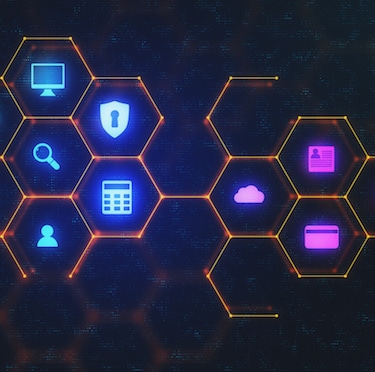
Is edge computing as important as some experts are saying? In a word, the answer is “Yes.” The fact is, with the growth of intelligent devices and production robotics, most manufacturing data is now generated at the edge of the network, in operations and execution. In other words, on the plant floor and related places like incoming parts inspection and shipping.
Just how much data are we talking about? The answer varies widely for different manufacturers, but a single machine on a production line can generate gigabytes of data every day. A smart factory can produce several petabytes a week.
However, only a tiny percentage of this data is analyzed and acted on in real-time. The very data that is most relevant to real-time action—to what’s happening right there in the factory—is not readily available to the people and machines that need it.
Now, edge computing is starting to change that picture.
A Simple Idea With Far-Reaching Consequences
Edge computing simply means processing data locally, where it’s produced, instead of sending it up the line for processing by other systems like MES, ERP, or data warehouses.
Consider a robotic system on a production line. It typically reports to a Manufacturing Execution System, possibly in the cloud, which may then send the data to a warehouse to clean and contextualize before pushing it out to decision-makers or other connected systems. By contrast, with edge computing, data is processed and distributed right at the source. This can be done by the device itself or by a local server. Only data that needs to be centralized is sent up the stack.
Gartner research suggests that by 2025, three-fourths of data processing across multiple industries will take place at the edge of the network. Here are 5 reasons why manufacturers should make edge computing part of their digital strategy.
- Improve Performance
Edge computing improves performance, not just of your network and systems, but of your operations by providing faster response to people and devices. With edge computing, data is immediately available for critical operational applications such as real-time quality monitoring, production alerts, or rapid decision-making. What’s more, it offloads MES and other systems, as well as the overall network, improving their performance in the bargain.
The positive effects of edge computing ripple outward to the whole organization. According to IBM, “Because data does not traverse over a network to a cloud or data center to be processed, latency is significantly reduced. Edge computing — and mobile edge computing on 5G networks — enables faster and more comprehensive data analysis, creating the opportunity for deeper insights, faster response times, and improved customer experiences.”
- Increase the ROI on Smart Devices
The performance gains of edge computing are especially appealing because the key infrastructure to make it happen—smart devices and the IIoT—are already in place in manufacturing enterprises, or soon will be. Intelligence is built into everything these days. Strategic Finance Magazine reports that by 2023, more than 46 billion IoT-connected devices will be in use.
From robots on the production line to autonomous vehicles in the warehouse to augmented reality devices like smart glasses, digital technology is present throughout most manufacturing enterprises. The ability to utilize that resource could be a key advantage over the competition. In other words, edge computing offers large rewards for relatively small investments, and that’s always a strong business argument.
- Improve Resilience and Reliability
The old saying “Don’t put all your eggs in one basket” applies here. When all your data is funneled through one system, you could be in trouble if something goes wrong. And it will because no system is perfect. Edge computing enables many operations to continue even if central systems are down or connections are broken. It takes advantage of the fact that processing, storage, and applications are distributed around the organization so that no single disruption can bring down your operations.
Edge computing is almost always involved in the critical day-to-day operations of an organization. When you consider the cost of manufacturing downtime, avoiding just one widespread failure could justify the cost of implementing an edge computing strategy in your enterprise.
- Scale More Easily
If every new capability at the edge requires integrating and connecting it with the overall system, scaling can be complicated. Expanding a data center alone can be an expensive proposition, even without worrying about all the interconnections that must be updated. Edge computing takes advantage of the cloud to provide storage, and in some cases SaaS applications, to keep things local.
With so much intelligence now being bundled into devices, it’s a relatively simple matter to scale local capabilities as needed. Furthermore, the risk is low. Making changes in the central data center has implications for the whole enterprise. Adding a local server for edge processing carries only negligible risk.
- Ease IT/OT Convergence
It may seem counter-intuitive but adding devices at the edge can not only offer a more secure architecture than a centralized system, but it can also help further an organization’s IT/OT convergence strategy. IDC’s Jonathan Lang and Kevin Prouty explain further in their report, The Blurred Lines at the Edge of OT. “As industrial enterprises pursue edge computing to resolve some of the challenges they face in scaling connectivity of assets or managing new and expanding workloads within operations, the functionality of edge computing is beginning to blur with the functionality of traditional OT systems … edge systems play an important functional and tactical role in enabling the intelligence of OT.” This all points to the growing convergence between not only these two sets of systems (IT and OT), but also of the data that is being shared as manufacturing organizations continue to strive in becoming a Model-based Enterprise.
Regardless of your position or utilization of edge computing, one thing remains certain. The need for improving resilience with greater flexibility in technology platforms will continue to be important. Edge computing is still an evolving technology that relies on easy connectivity and integration with multiple systems and devices to improve access to data for improved decision support. In my decision, that sounds like a smart way to place future investments in an Industry 4.0 type of strategy.





